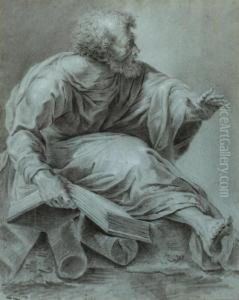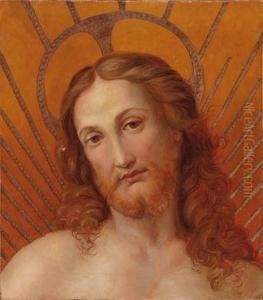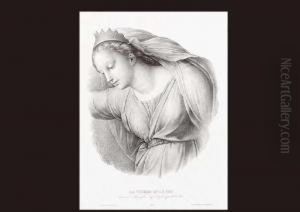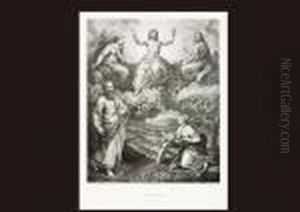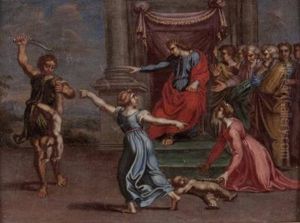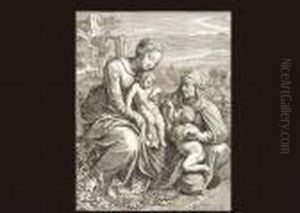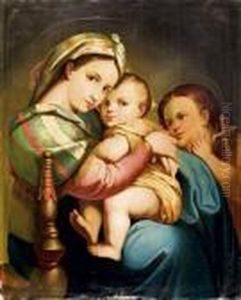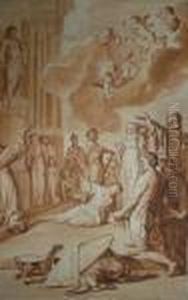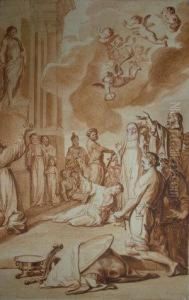Santi Raffaelo Paintings
Raffaello Sanzio da Urbino, known as Raphael, was an Italian painter and architect of the High Renaissance. Born on April 6, 1483, in Urbino, Italy, Raphael was a master artist who is considered one of the great trinity of masters of that period, alongside Michelangelo and Leonardo da Vinci. He was known for his clarity of form, ease of composition, and visual achievement of the Neoplatonic ideal of human grandeur. Raphael's work is admired for its clarity of form and ease of composition and for its visual achievement of the Neoplatonic ideal of human grandeur.
Raphael was born to Giovanni Santi, a painter in the court of Urbino, and Magia di Battista Ciarla. His father's position provided Raphael with an early introduction to the principles of art. Trained in the workshop of Perugino, Raphael would come to develop his own more serene and harmonious style, which was a departure from his teacher's more detailed and intricate works. Raphael's mother died in 1491 when he was eight years old, and his father died in 1494. Despite these early losses, Raphael continued his artistic training and began to take on commissions.
Raphael's first documented work, 'The Baronci Altarpiece', was made for the church of Saint Nicholas of Tolentino in Città di Castello, near Urbino. Moving to Florence in 1504, he was exposed to the works of artists such as Leonardo da Vinci and Michelangelo, whose influences are evident in his subsequent development of a more dynamic and complex style. His Florentine works, such as 'The Madonna of the Meadow' (1505), reflect the impact of these encounters and show an increased mastery of emotion and human form.
In 1508, Raphael was called to Rome by Pope Julius II and commissioned to paint the Stanza della Segnatura in the Vatican Palace. These rooms contain some of his most famous frescoes, including 'The School of Athens' and 'The Disputation of the Holy Sacrament'. Raphael's frescoes were so well received that he was soon regarded as the foremost painter in Rome. During his time in Rome, he also began to work as an architect, and in 1514 he was appointed the architect of St. Peter's Basilica, succeeding Donato Bramante.
Raphael never married, but he was engaged to Maria Bibbiena. He had a series of relationships, the most famous being with Margarita Luti, known as 'La Fornarina'. Raphael died on his 37th birthday, April 6, 1520, in Rome. His death is said to have been caused by a fever, possibly exacerbated by a night of excessive lovemaking, followed by a therapeutic bloodletting. He was buried in the Pantheon in Rome, an honor reflecting his standing in the world of art. Raphael's legacy is immense, influencing generations of artists, and his works remain an enduring testament to the ideals of Renaissance art.

